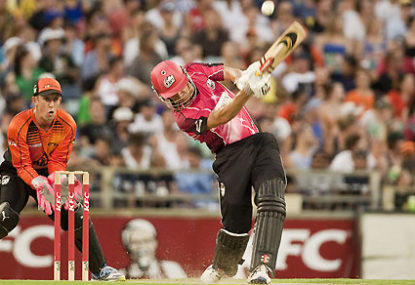My wife and I decided to take our daughter out for breakfast at a local cafe to celebrate her HSC results.
My daughter won’t be receiving an invitation anytime soon from NASA or Harvard Business School, or the like, but that’s not the point.
She passed all her exams well and most satisfying for us, produced her best ever results at the very end of her schooling.
In the last few years, her marks improved incrementally every term. You can’t ask for anymore than she did her absolute best.
Anyway, I noticed a young guy at the table next to us whose face appeared vaguely familiar to me. During our breakfast, I asked him if his name was Henriques.”Yes” he replied, “Moises.”
Later after we finished our breakfast I asked him if he would mind if I asked him a question or two. “Sure” he said, and so we then had a fascinating discussion for about 10-15 minutes.
Before I proceed with our conversation, let me say Moises Henriques came across as a very impressive young man and a credit to his family. He was polite, articulate, engaging, considerate and unpretentious.
A very impressive young man indeed.
I began by asking him about T20 and Test cricket, and whether, as a young guy, he had a particular preference for one or the other, and whether he saw T20 as benefitting or detracting from the longer forms of the game.
Moises replied that most guys his age (twenties) still preferred the longer forms of the game if they were to be taken seriously as cricketers. He offered the observation that if younger guys coming into the game today concentrated only on T20, then they were unlikely to progress much further in their cricket.
However, Moises made the interesting declaration that today’s players loved T20. They loved the atmosphere and the energy. The dressing rooms were usually all abuzz with excitement. They loved the fact that the game was all over in three hours.
Knowing the game only lasted three hours meant you could put more energy into the game than in the longer forms. Many of the skills for T20 were the same as for longer forms of cricket, but obviously compressed.
Moises went on to suggest that T20 cricket would eventually replace one-day cricket. This appears to be becoming an even more prevalent observation among players, both present and past.
Although he didn’t say so, it would make a logical conclusion to say that T20 will eventually replace ODIs as the preferred format for the ICC World Cup.
I then asked Moises about specific tactics used in T20, in an endeavour to better understand the format myself.
I ventured the thought that when ODIs first became popular back in the 1970s, you could immediately see the benefit derived in terms of Test cricket – better fielding, more aggressive batting and so on.
But the benefits of T20 in relation to Test cricket appeared less obvious to the eye, although I ventured the tactics appeared to be more sophisticated now.
Moises agreed that T20 had become more sophisticated, especially with batting. It was no longer a case of pure slogging all the time, but developing different batting techniques to work the ball into vacant areas.
Perhaps the most illuminating thing I can share with readers, is that Moises believed that while finding the ‘wicket balls’ as a bowler remained critical in T20, the buildup of pressure on the batsman was still an integral part of the game.
Moises said that as a bowler he tried to model himself on Glenn McGrath, bowling a perfect line and length to force the batsman to try something different. In T20 cricket you can still apply a buildup of pressure, but obviously for shorter periods.
If you can keep a batsman to ‘dot’ balls, or at worst, singles, for 2-3 balls, then you know he is going to go after you. This then allows you to use variation in anticipation, by varying your line or length, and changing your speed up or down, in order to draw a false stroke.
I thanked Moises for his time and giving me such thoughtful insights, which I hope I’ve transcribed accurately!
Although I still remain somewhat skeptical about the potential impact of T20 on Test cricket, I’m less averse to this form of the game than previously. More importantly, I believe I now have an even better understanding and appreciation of the format.
As I found with with ODIs in comparison to Test cricket, one of the difficult things is translating stats to determine what makes a great, or good, or average T20 cricketer. These sorts of things take time to get your head around.
And I shall sign off with the same words I offered Moises, “good luck with your cricket.”





























































































